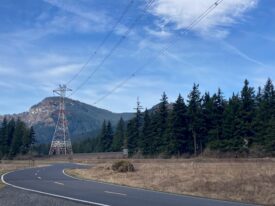The “youth plaintiffs” in Juliana v. United States are poised on the brink. Just ten days before their potentially groundbreaking climate change trial against the federal government was scheduled to begin, Chief Justice John Roberts stepped in and put the case on hold.
The full Supreme Court will now consider a request from the US government to terminate the litigation before the so-called “Trial of the Century” even begins. The case was supposed to start October 29 in Eugene, Oregon.
In 2015, the 21 young people, now aged 11 to 22, brought their lawsuit in the US District Court of Oregon, arguing that US energy policy over the decades has so drastically destabilized the climate that it violates the US Constitution. After three years, a new president, and countless legal filings, the plaintiffs are now in Eugene and ready to testify about how climate change already affects their lives and compromises their futures.
Each time a trial date approaches (it was originally set for February 2018), the government unleashes a grab bag of legal filings designed to end the case—or at least delay its progress. As a result, the plaintiffs have quite literally been here before: In July, the Supreme Court rejected a similar plea from the government.
So what’s different just three months later? It’s certainly not the government’s arguments, which are largely recycled from its previous attempt. Instead, as most everyone knows, it’s the Supreme Court itself. Justice Anthony Kennedy was still on the bench when the government made its last request. With the upcoming ruling, we could see the influence of the newly minted Justice Brett Kavanaugh.
The youth plaintiffs are again in the all-too-familiar position of waiting while those in power make decisions about their fate.
Potential Pathways
The pause initiated by Justice Roberts is intended to be brief while the entire Supreme Court confronts two decisions. First, the Court should rule on whether to grant the government’s request for a temporary stay of the trial. Then, it will decide whether the case should be permanently dismissed.
The two decisions inevitably overlap, as a vote for or against the stay could reveal a justice’s sentiments about allowing the case to proceed at all. The extended silence after Justice Robert’s intervention is more ambiguous, inviting speculation about the Court’s internal negotiations. The failure to issue a decision effectively grants the stay by leaving Justice Robert’s hold in place, but if a majority of justices are skeptical about allowing the trial to go forward, why not simply issue the stay?
This period of limbo presents an opportunity to look ahead and consider how the arguments the government has made to the Supreme Court overlap the major points of contention in Oregon, should the trial eventually take place.
Standing Up for Climate Justice
Any plaintiff bringing a lawsuit in federal court must demonstrate “standing” to sue. Put simply, a plaintiff needs to have a genuine stake in the outcome of the case. Legally, it requires a party to show three things: 1) an injury; 2) caused by the defendant; 3) that can be redressed by the court.
At least superficially, this would seem a light burden. The Juliana plaintiffs have suffered harms, including smoke-induced asthma attacks from wildfires and homes lost from flooding and drought—consequences that have well-documented links to climate change. The United States arguably bears significant responsibility, having contributed around a quarter of the planet’s accumulated carbon dioxide. And the US continues to pump out vast amounts of CO2, which the plaintiffs hope to curtail with this lawsuit.
Yet climate change presents unique challenges. It is truly a global phenomenon with countless sources of pollution in every country of the world, adding millions of tons of greenhouse gases to the atmosphere each day. Can the actions of any one country be said to “cause” global warming? If the US reduced its fossil fuel use, would emissions elsewhere in the world simply cancel out the effort?
The government forcefully argues that the youth plaintiffs must show precisely what actions resulted in the emissions that caused the injuries. The plaintiffs cite government decisions such as granting offshore oil and gas leases and permitting extensive timber harvest, but the Oregon court recognized that the “ultimate issue of causation will require perhaps the most extensive evidence” at trial.
The government has argued to the Supreme Court that additional facts are unnecessary because the plaintiffs’ theory of standing is fundamentally unsound. Rather than spend time fleshing out the details in Oregon, the defendants say the Court should simply dismiss the case now.
The Constitution and the Climate
In 2016, the court in Oregon found that the “right to a climate system capable of sustaining human life is fundamental to a free and ordered society” and is therefore protected by the Constitution.
The government has seized on one uncontroverted fact: the ruling is literally unprecedented. No court has found a similar right in the US Constitution. The government charges that the decision will allow a “single district court in Oregon” to potentially take control of “some of the most complex and high-stakes policy problems in government.”
The Oregon court, however, has cautioned that the plaintiffs’ success on the issue is not assured: “further factual development” will assist the court in reaching its final determination. As with standing, this inquiry raises the question of exactly which government actions led to the harms alleged by the plaintiffs.
In making their claim, the plaintiffs rely in part on the government’s failures to act, such as the failure to use regulatory tools like the Clean Air Act aggressively enough to limit carbon dioxide emissions from power plants. To invoke such failures to act, plaintiffs must show that the government placed plaintiffs in jeopardy with “deliberate indifference” to their safety. The plaintiffs have cited a wealth of evidence indicating the government has long been aware that increasing levels of carbon dioxide threaten to severely disrupt the climate.
The Oregon court nevertheless referenced the “very high bar” that the plaintiffs must clear in order to make use of the government’s failures to act given the “complicated and novel questions about standing, historical context, and constitutional rights.”
Once again, the government insists the Supreme Court make its decision without the need for gathering further evidence in a multi-week trial.
Measuring Success
Regardless of how the Supreme Court finally rules, there are good reasons to appreciate the work that has been done by the Juliana plaintiffs and their lawyers. The case personalizes climate change by highlighting the stories of the young people involved and serves as a rallying point for the larger climate movement. (Everyone should check the first link to meet the charming and thoughtful Aji Piper, a plaintiff in both the Juliana litigation, as well as a similar lawsuit in Washington State.)
The litigation also forced the federal government to make clear its position on the established science. Despite President Donald Trump’s recent bout of incoherence on the subject, the government concedes that our climate is changing; that the changes are caused in significant part by the world’s consumption of fossil fuels; and that the consequences represent a serious threat to our health and welfare.
Given the history of the case, don’t be surprised if the youth plaintiffs manage to survive the latest round to fight another day. But no matter the end result, their resilience in the face of adversity, legal and otherwise, deserves the recognition of everyone engaged in the climate cause.
Interested in additional details on the case? You can read more about the litigation here and here. Otherwise, keep an eye on your news feed for what comes next.
Michael Mayer practiced environmental law in the Northwest for close to a decade and now teaches climate change law at Seattle University School of Law.










Linda Carnine
This article provides an excellent summary and analysis of our Oregon youth climate change lawsuit.
Marsha
Thank you, I’ve been at a loss to find more details about where the case stands at
the moment!